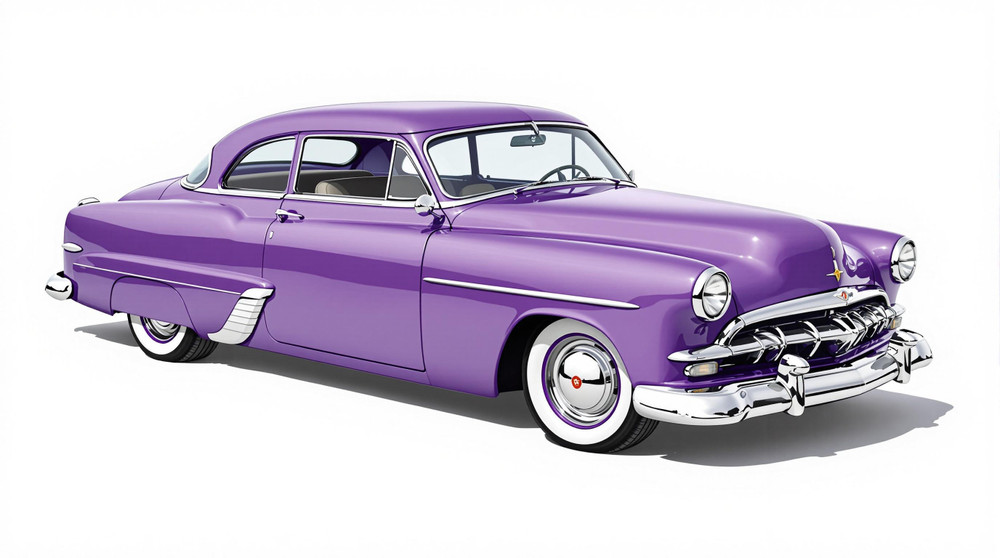Image of 1952 Nash Ambassador Custom, Note: These illustrations use artistic license and may differ from actual historical models.
Performance Metrics
Fundamental Metrics
Emotional Appeal
MMP Rating
| Engine Specifications | |
|---|---|
| Engine: | Inline 6 |
| Displacement: | 252 cu in (4.1 L) |
| Horsepower: | 120 hp |
| Torque: | Estimated 200 lb-ft |
| Compression Ratio: | 7.6:1 |
| Ignition System: | Battery Ignition |
| Cooling System: | Liquid Cooled |
| Performance Specifications | |
| 0-60 Time: | Estimated 15 seconds |
| 1/4 Mile Time: | Not available |
| Top Speed: | 90 mph |
| Transmission and Drive | |
| Drive Type: | Rear Wheel Drive |
| Transmission Type: | 3-speed manual with overdrive |
| Fuel and Efficiency | |
| Fuel System Type: | Carburetor |
| MPG: | Estimated 20 MPG |
| Dimensions and Brakes | |
| Brakes: | Drum Brakes |
| Wheelbase: | 121.3 in |
| Weight: | 3,200 lbs |
Note: Specifications for classic cars are given to the best of our ability, considering the limited and variant data available.
1952 Nash Ambassador Custom: A Testament to Post-War Innovation
The 1952 Nash Ambassador Custom stands as a testament to the ingenuity and resilience of post-war America. Born from the assembly lines of Nash-Kelvinator Corporation, this vehicle emerged at a time when the automotive industry was undergoing significant transformation. The Ambassador Custom wasn't just another car; it was a symbol of progress, boasting a unique combination of style, comfort, and technology that captured the imagination of the 1950s consumer. Notably, it was one of the first cars to offer factory-installed air conditioning, setting a precedent for passenger comfort that would become an industry standard.
Design and Innovation
With its sleek lines and aerodynamic silhouette, the 1952 Nash Ambassador Custom cut a distinctive figure on the road. The exterior styling was characterized by its 'Airflyte' design language, which included enclosed front wheels and a fastback profile that seemed to glide through the air. Inside, passengers were treated to an interior that prioritized luxury with high-quality fabrics and an attention to detail that was ahead of its time. Technological advancements were not limited to creature comforts; under the hood lay an advanced overhead-valve six-cylinder engine, paired with Nash's innovative 'Hydra-Matic' automatic transmission. Color options ranged from conservative shades to more vibrant tones, with popular choices including Sunset Maroon and Surf Green. Among the body styles available, the Pininfarina-designed Country Club hardtop coupe stood out as an icon of automotive elegance.
Historical Significance
The Ambassador Custom's impact on automotive design cannot be overstated. It challenged conventional aesthetics and introduced features that would become commonplace in future generations of vehicles. Its legacy is evident in the way it pushed boundaries and demonstrated that American cars could lead in both style and substance.
Performance and Handling
Performance-wise, the 1952 Nash Ambassador Custom was no slouch. Its top speed approached 100 mph—a respectable figure for its era—and it could accelerate from 0-60 mph in a time that kept pace with its contemporaries. Handling was smooth, thanks in part to its unitized body construction and independent front suspension. Drivers often remarked on the quietness of the engine and how driving felt like floating—a sensation amplified by the spacious cabin and comfortable seating.
Ownership Experience
Owners of the 1952 Nash Ambassador Custom found it to be versatile; it served equally well as a daily driver or a weekend showpiece. Its reliability was commendable for its time, though modern enthusiasts should be prepared for the challenges inherent in maintaining a classic car. Parts can be scarce, but a dedicated community of Nash aficionados often provides support for those looking to keep these beauties on the road.
Fun Facts
The Ambassador Custom has had its share of limelight, including being featured in period films and owned by celebrities of the day. Criticisms were few but did include some who found its avant-garde styling polarizing or who wished for more raw power under the hood.
Collector's Information
Today, a well-preserved 1952 Nash Ambassador Custom can fetch anywhere from $15,000 to $50,000 depending on condition and provenance. While production numbers were not as low as some exclusive luxury cars of its time, finding one in pristine condition can be challenging. The market has seen appreciation for well-maintained examples due to their historical significance and unique design.
Conclusion
In summary, the 1952 Nash Ambassador Custom is more than just another vintage car; it's a piece of American history that continues to captivate enthusiasts around the world. Its blend of innovation, style, and comfort serves as a reminder of an era when cars were about more than just transportation—they were about aspiration and dreams made tangible.
1952 Nash Ambassador Custom Catalog of Parts
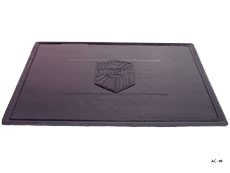 1952 Nash Ambassador Custom Accessory Floor Mat - 12"X17"-AC 46Accessory Floor Mat - made of high quality black rubber with molded original emblem. Also designed to be sewn into new carpets. 12"X17", Each
1952 Nash Ambassador Custom Accessory Floor Mat - 12"X17"-AC 46Accessory Floor Mat - made of high quality black rubber with molded original emblem. Also designed to be sewn into new carpets. 12"X17", Each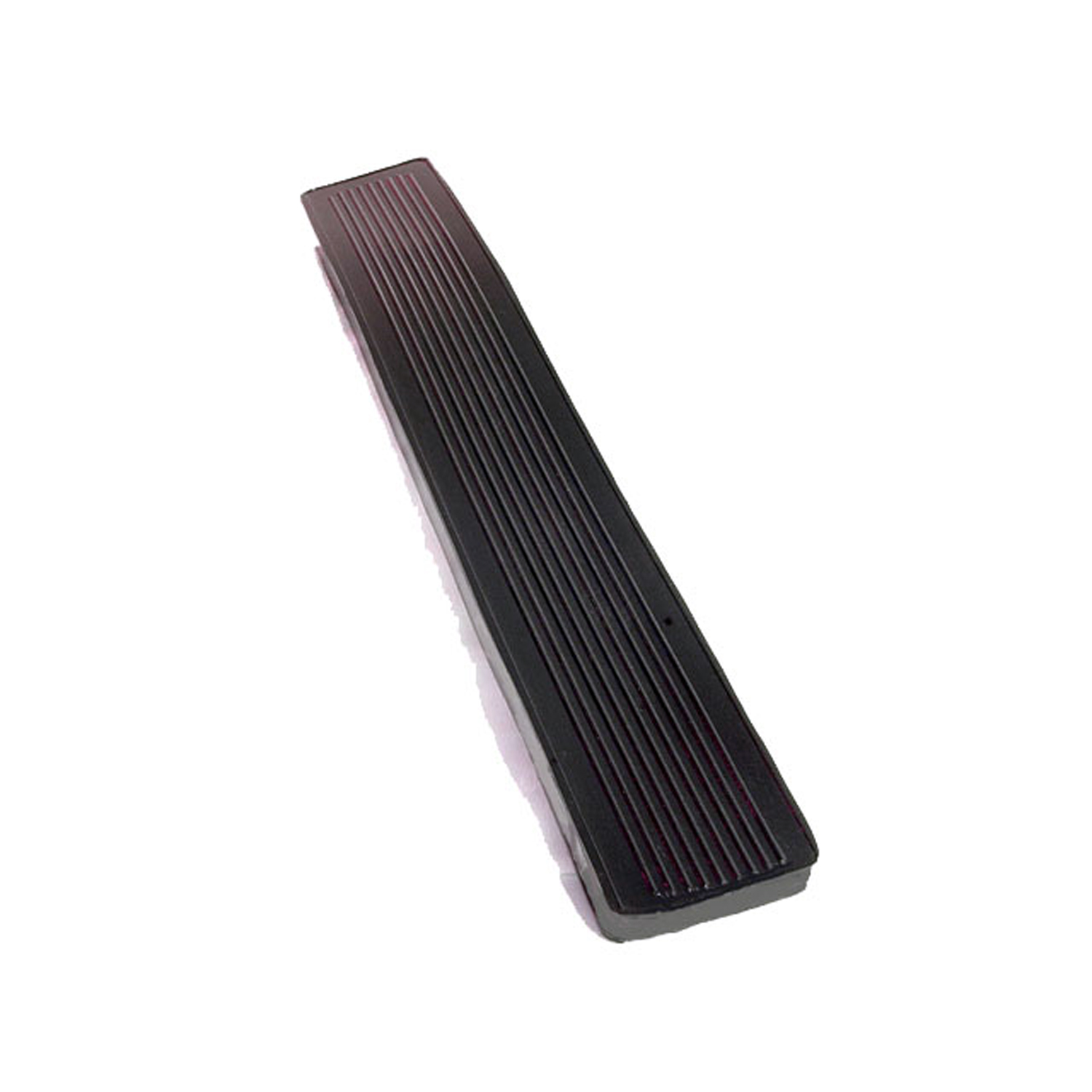 1952 Nash Ambassador Custom Accelerator Pedal Pad, 1-1/2" X 9-3/4", Each-AP 21Accelerator Pedal Pad, 1-1/2" X 9-3/4", Each
1952 Nash Ambassador Custom Accelerator Pedal Pad, 1-1/2" X 9-3/4", Each-AP 21Accelerator Pedal Pad, 1-1/2" X 9-3/4", Each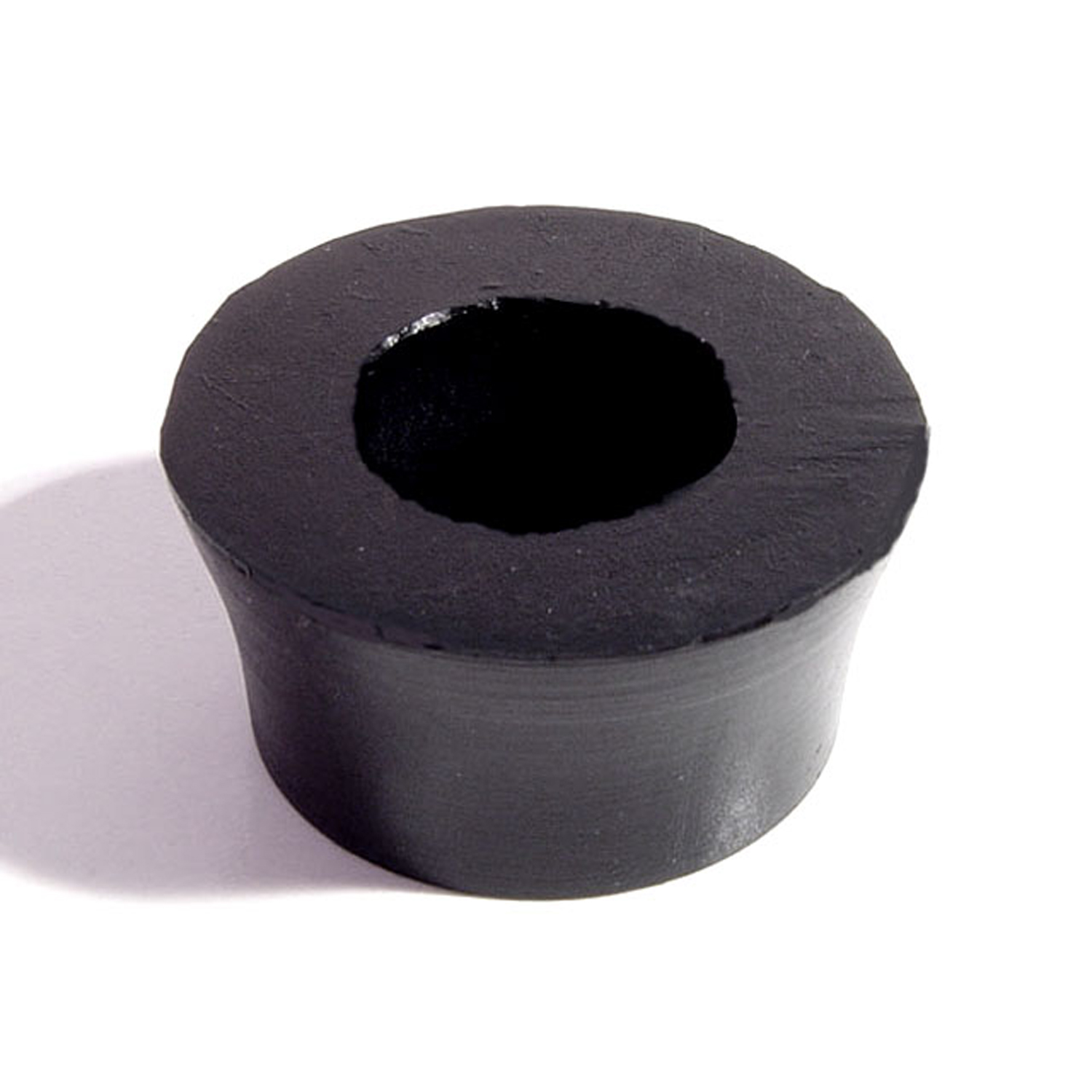 1952 Nash Ambassador Custom Shock Absorber Grommet. 1" bottom O.D., 5/8" high-BN 10Shock Absorber Grommet. 1" bottom O.D., 5/8" high., with 5/8" I.D. Each
1952 Nash Ambassador Custom Shock Absorber Grommet. 1" bottom O.D., 5/8" high-BN 10Shock Absorber Grommet. 1" bottom O.D., 5/8" high., with 5/8" I.D. Each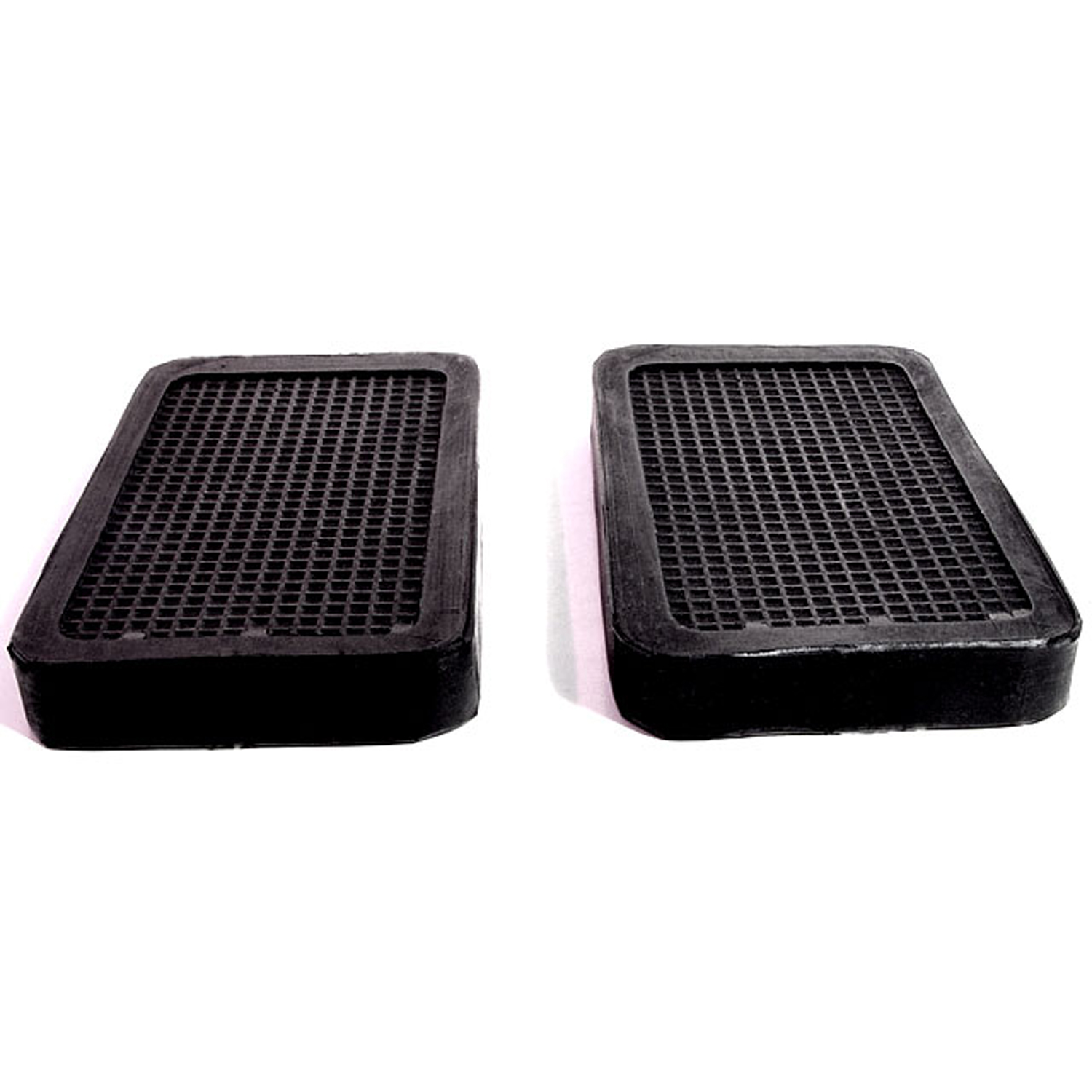 1952 Nash Ambassador Custom Clutch and Brake Pedal Pads. 2-1/4" wide X 4" long. Pair-CB 20Clutch and Brake Pedal Pads. 2-1/4" wide X 4" long. Pair
1952 Nash Ambassador Custom Clutch and Brake Pedal Pads. 2-1/4" wide X 4" long. Pair-CB 20Clutch and Brake Pedal Pads. 2-1/4" wide X 4" long. Pair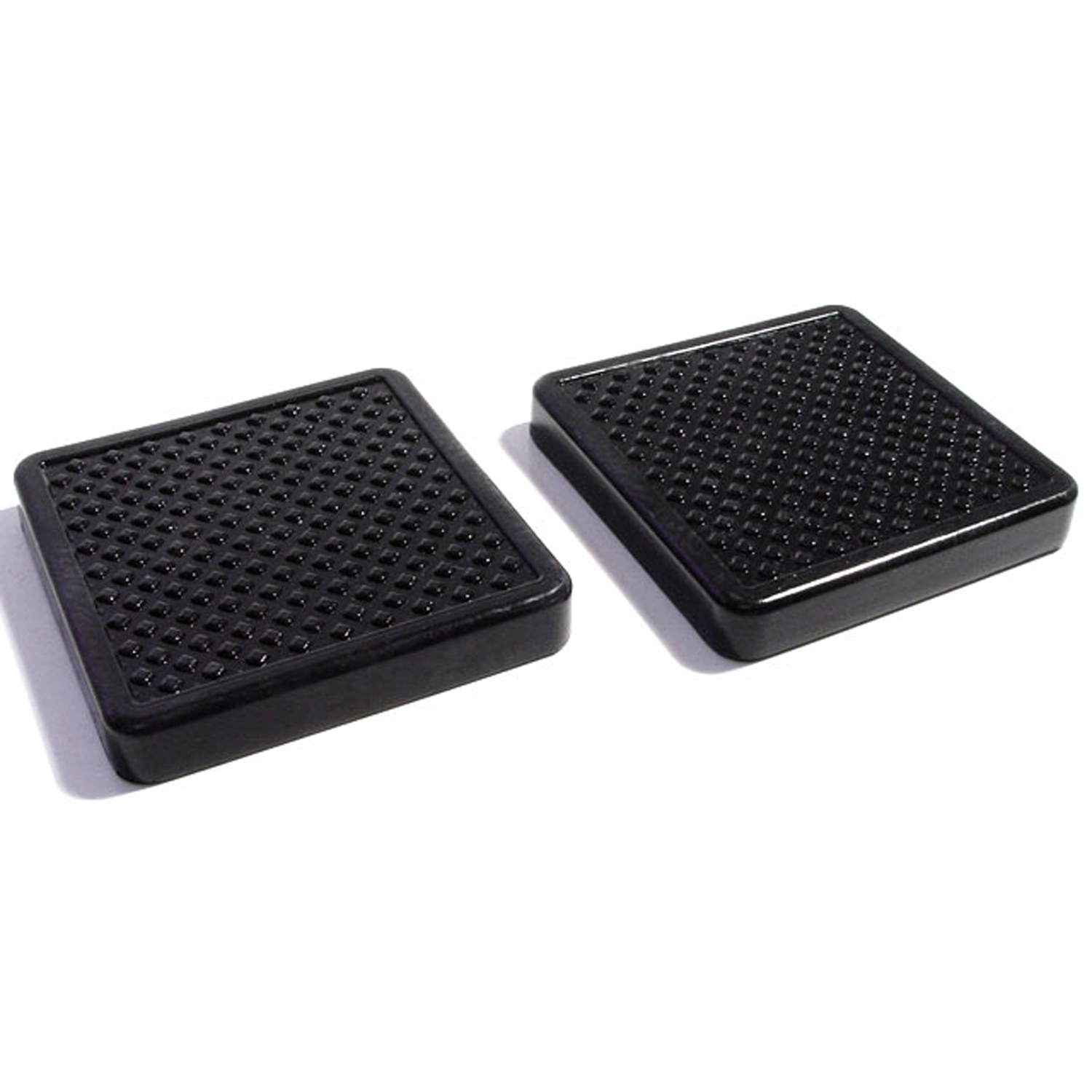 1952 Nash Ambassador Custom Clutch and Brake Pedal Pads. 3" wide X 3" long. Pair-CB 47Clutch and Brake Pedal Pads. 3" wide X 3" long. Pair
1952 Nash Ambassador Custom Clutch and Brake Pedal Pads. 3" wide X 3" long. Pair-CB 47Clutch and Brake Pedal Pads. 3" wide X 3" long. Pair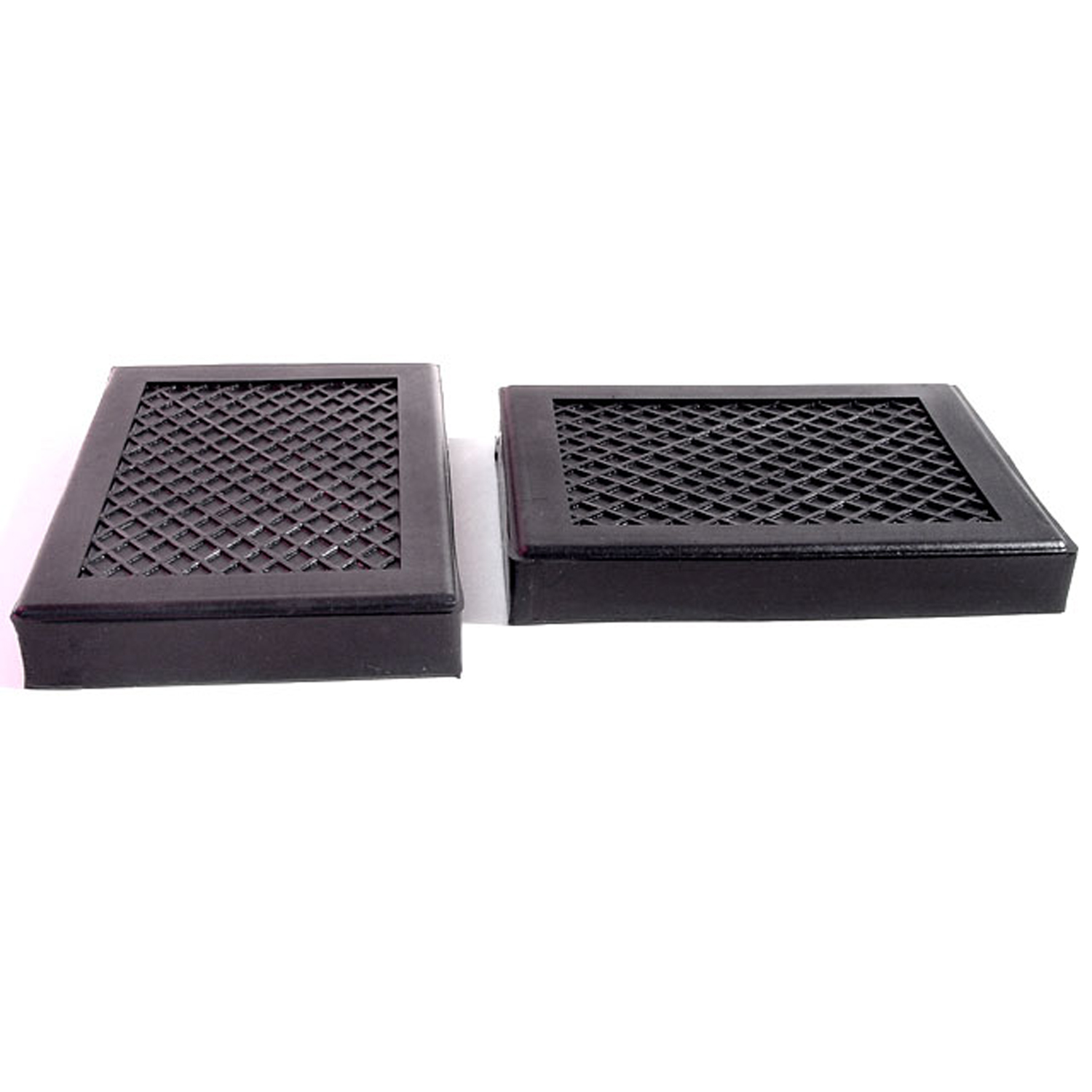 1952 Nash Ambassador Custom Clutch and Brake Pedal Pads. 2-3/4" wide X 3-7/8" long-CB 48Clutch and Brake Pedal Pads. 2-3/4" wide X 3-7/8" long. Pair
1952 Nash Ambassador Custom Clutch and Brake Pedal Pads. 2-3/4" wide X 3-7/8" long-CB 48Clutch and Brake Pedal Pads. 2-3/4" wide X 3-7/8" long. Pair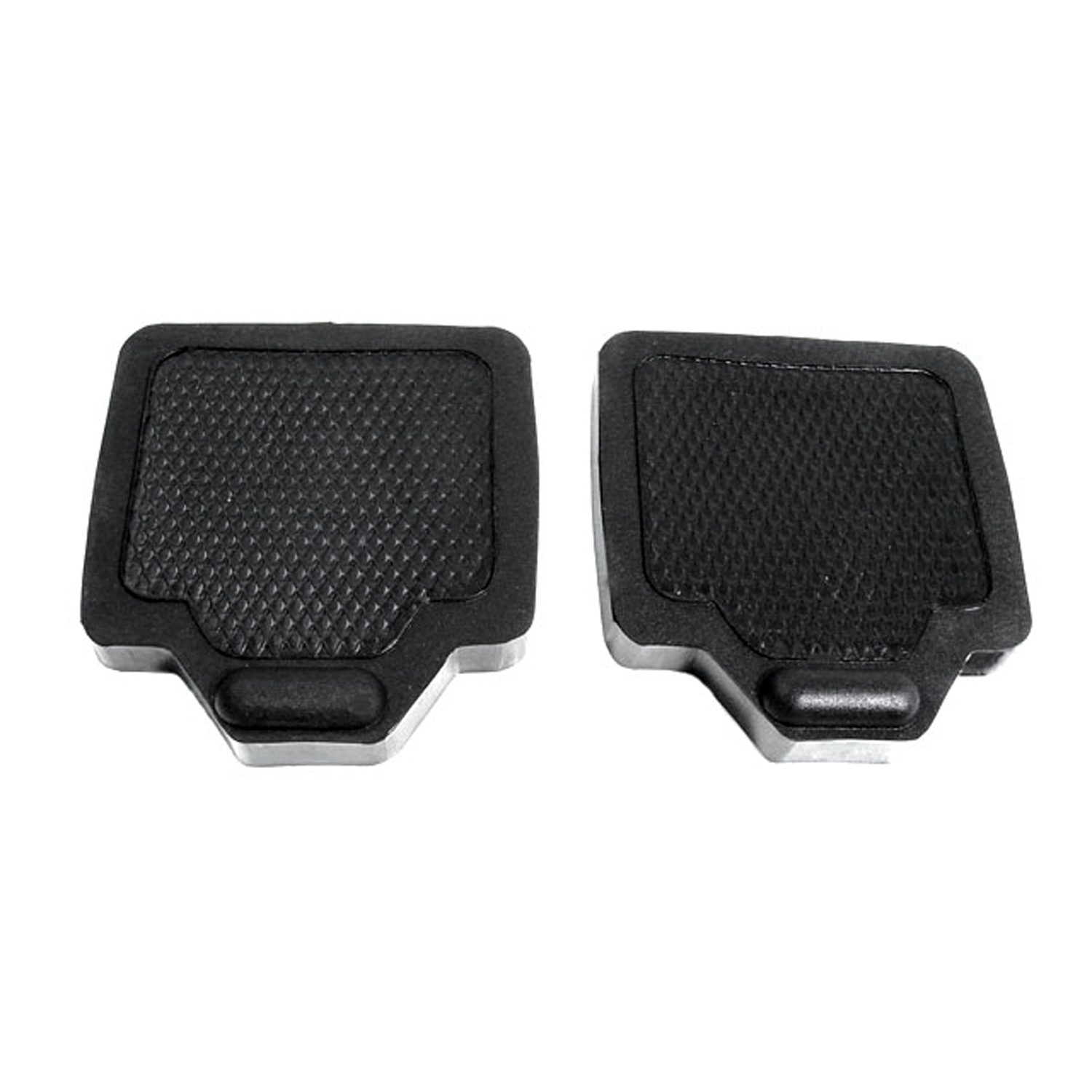 1952 Nash Ambassador Custom Clutch and Brake Pedal Pads. 3-1/2" wide X 3-7/8" long-CB 55Clutch and Brake Pedal Pads. 3-1/2" wide X 3-7/8" long. Pair
1952 Nash Ambassador Custom Clutch and Brake Pedal Pads. 3-1/2" wide X 3-7/8" long-CB 55Clutch and Brake Pedal Pads. 3-1/2" wide X 3-7/8" long. Pair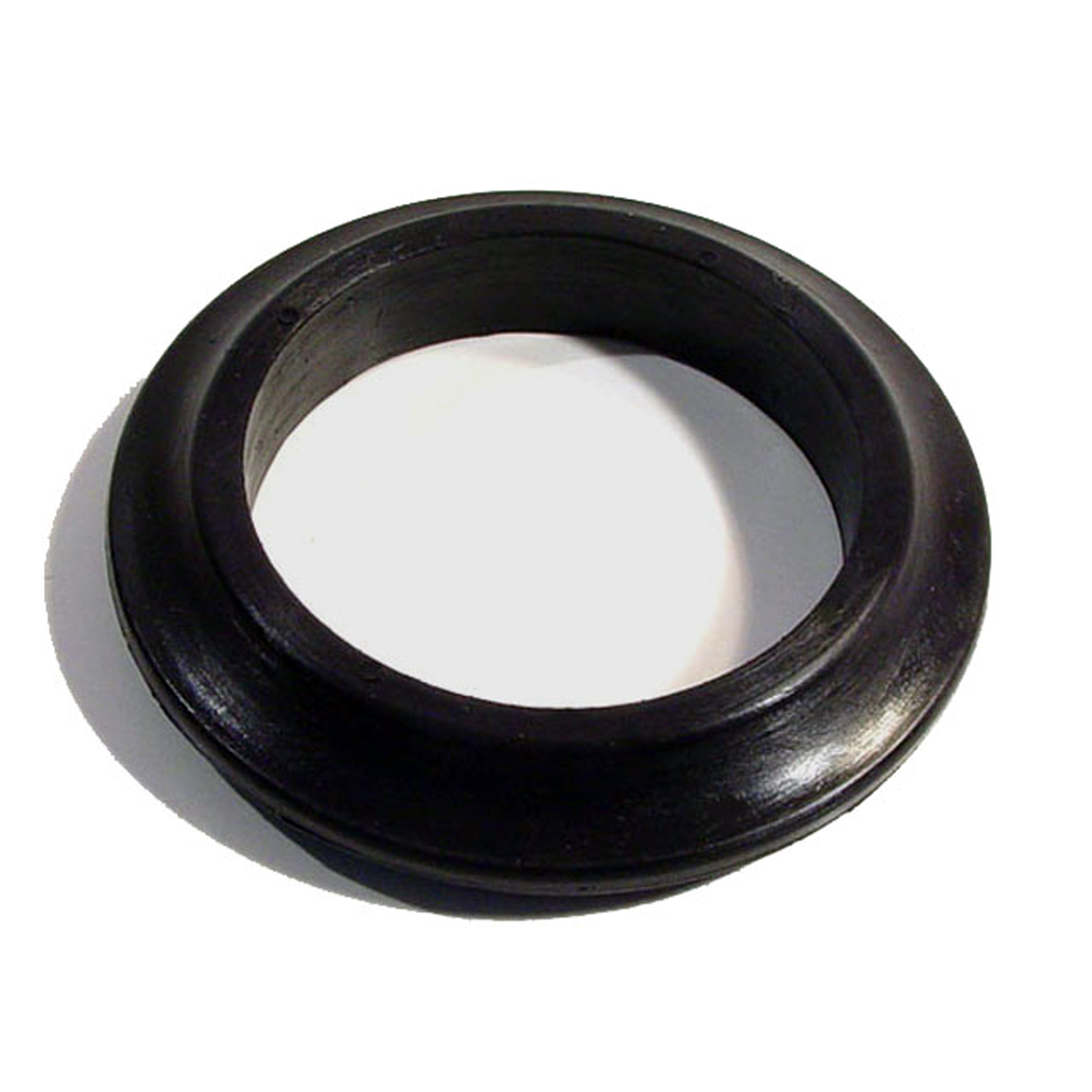 1952 Nash Ambassador Custom Gas Filler Grommet. 2-1/4" I.D., 3-5/16" O.D. Each-GF 21Gas Filler Grommet. 2-1/4" I.D., 3-5/16" O.D. Each
1952 Nash Ambassador Custom Gas Filler Grommet. 2-1/4" I.D., 3-5/16" O.D. Each-GF 21Gas Filler Grommet. 2-1/4" I.D., 3-5/16" O.D. Each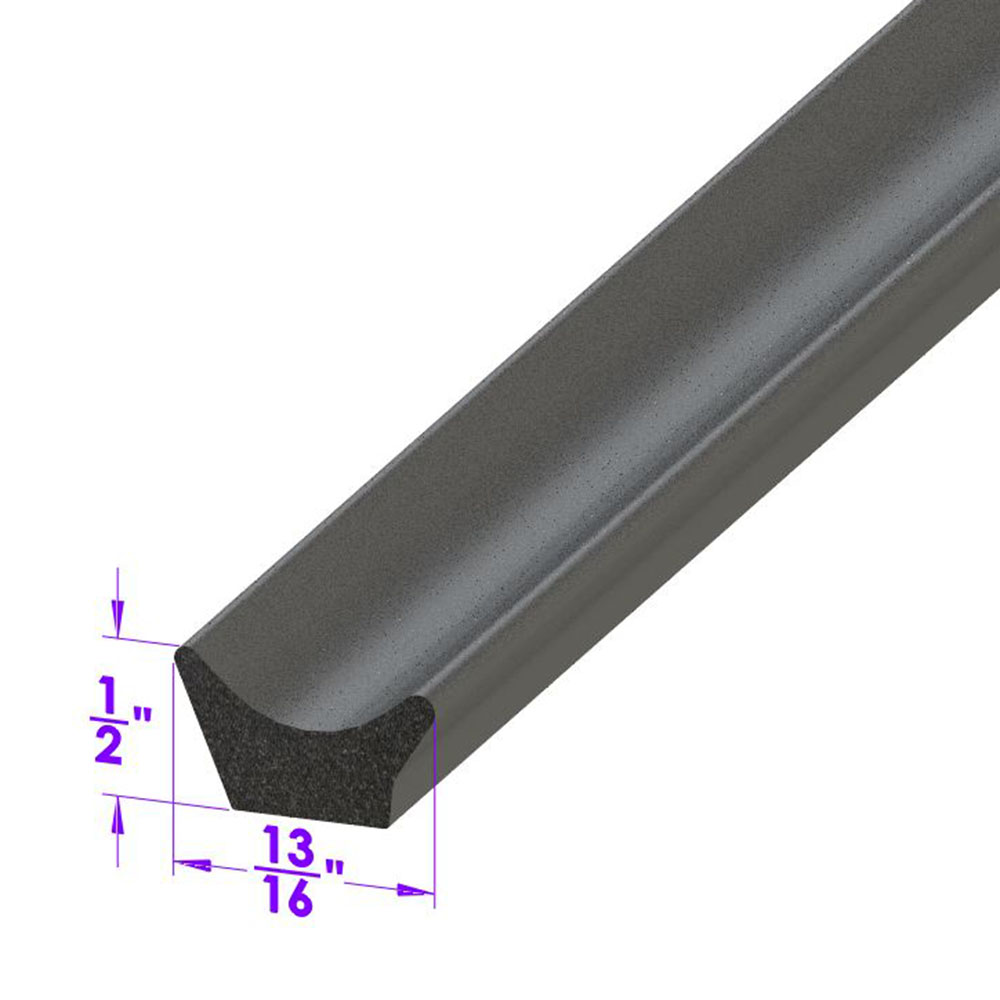 1952 Nash Ambassador Custom Door side seal. Same as LP 40, but for a lighter seal-LP 40-ADoor side seal. Same as LP 40, but for a lighter seal. Fits many domestic passenger cars and trucks. Universal seal for street rods and customs. Used in Cobra kit cars as door weatherstrip. Per foot.
1952 Nash Ambassador Custom Door side seal. Same as LP 40, but for a lighter seal-LP 40-ADoor side seal. Same as LP 40, but for a lighter seal. Fits many domestic passenger cars and trucks. Universal seal for street rods and customs. Used in Cobra kit cars as door weatherstrip. Per foot.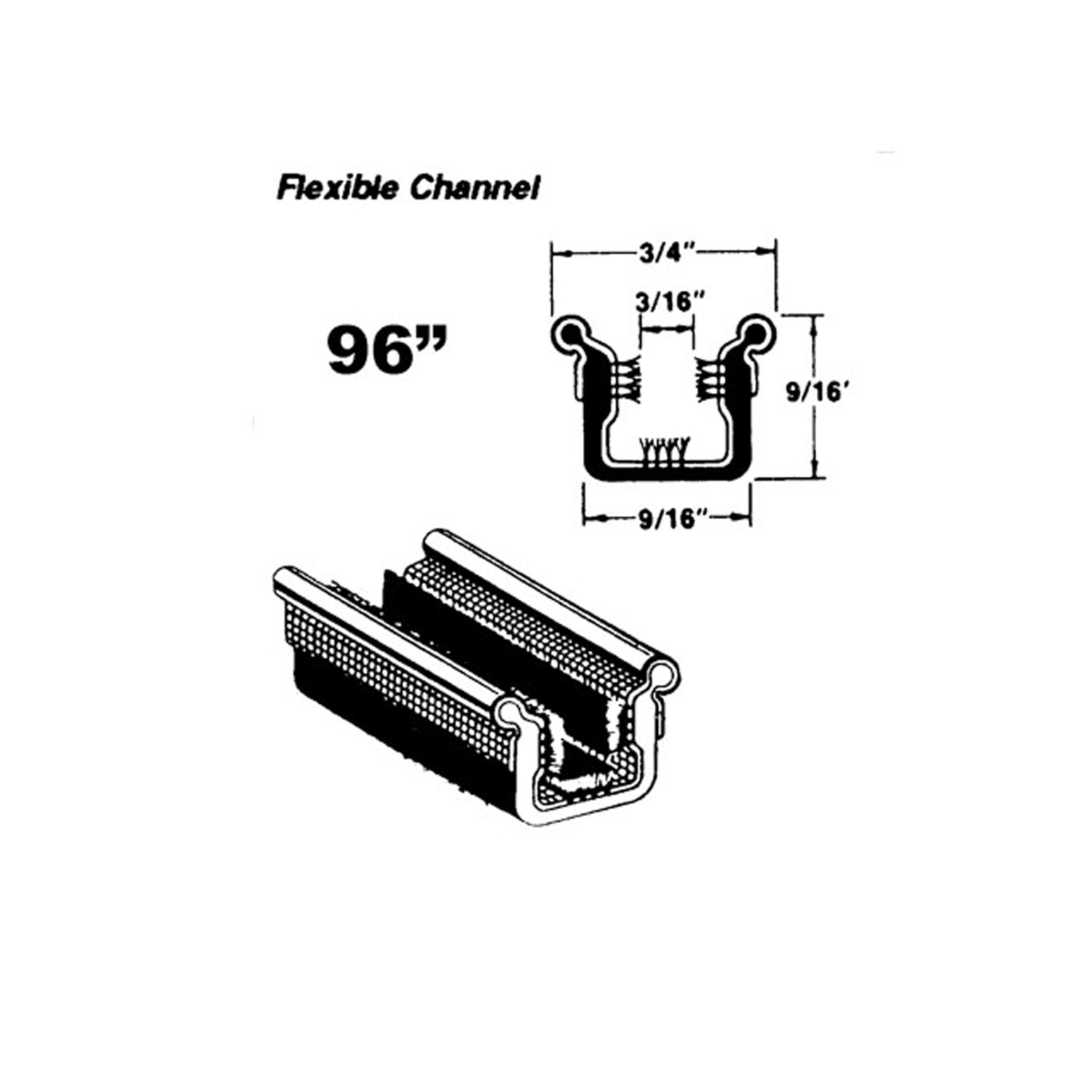 1952 Nash Ambassador Custom Flexible window channel-WC 10-96Flexible window channel. Rubber covered with mohair lining and stainless steel bead. 96 in. long. Each. NOTE: $20 special shipping charge applies for domestic orders. Call or email for overseas shipping costs. Part can be sectioned in two or three equal lengths to reduce overseas shipping costs.
1952 Nash Ambassador Custom Flexible window channel-WC 10-96Flexible window channel. Rubber covered with mohair lining and stainless steel bead. 96 in. long. Each. NOTE: $20 special shipping charge applies for domestic orders. Call or email for overseas shipping costs. Part can be sectioned in two or three equal lengths to reduce overseas shipping costs.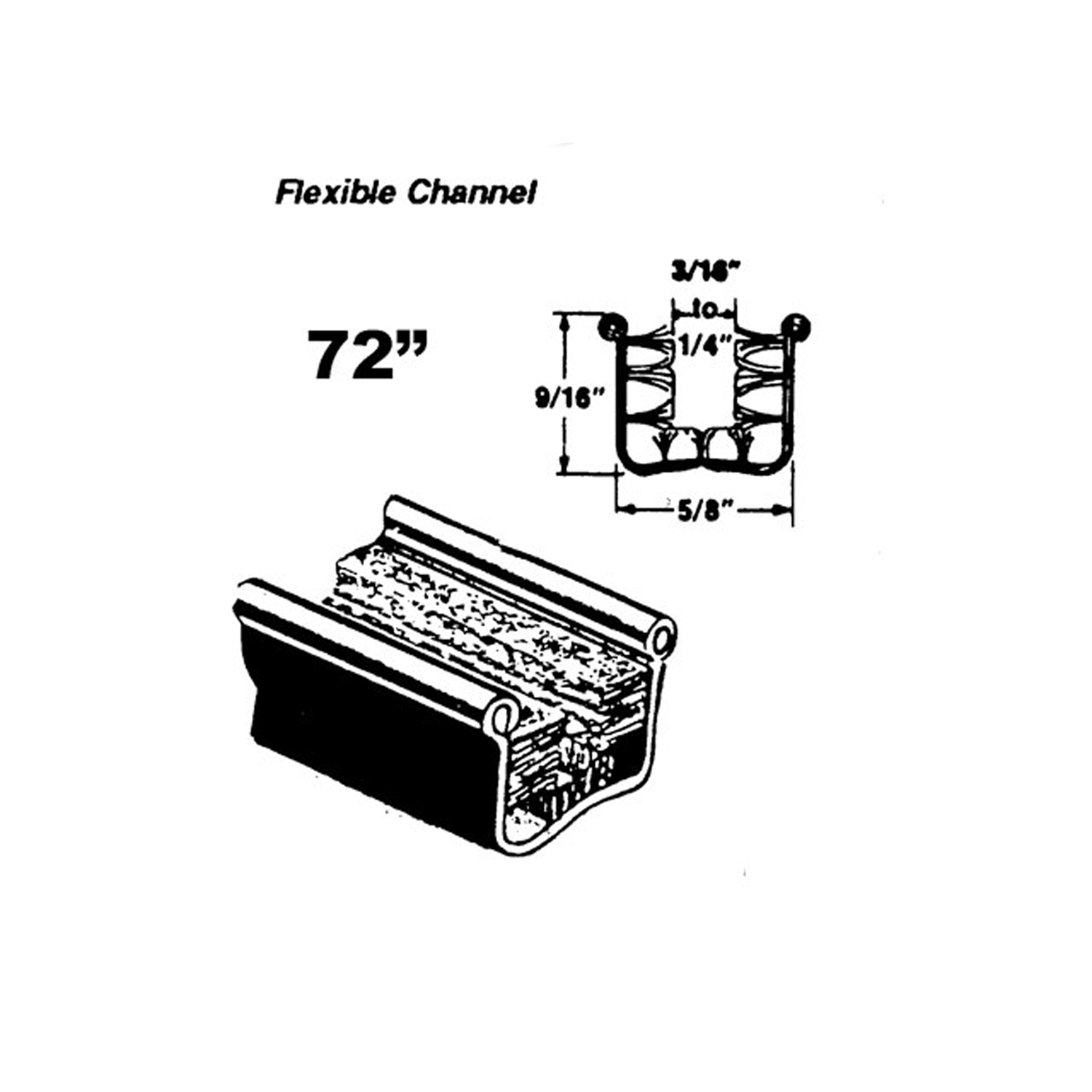 1952 Nash Ambassador Custom Flexible glass-run channel-WC 11-72Flexible glass-run channel. Mohair lined, cloth covered with stainless steel bead. Used on side windows. 72 in. long. Each. NOTE: $20 special shipping charge applies for domestic orders. Call or email for overseas shipping costs. Part can be sectioned in two equal lengths to reduce overseas shipping costs.
1952 Nash Ambassador Custom Flexible glass-run channel-WC 11-72Flexible glass-run channel. Mohair lined, cloth covered with stainless steel bead. Used on side windows. 72 in. long. Each. NOTE: $20 special shipping charge applies for domestic orders. Call or email for overseas shipping costs. Part can be sectioned in two equal lengths to reduce overseas shipping costs.Why Choose Metro?
For over 100 years, Metro Moulded Parts has been the pinnacle of quality in classic car restoration parts. Our commitment to precision and authenticity in every component ensures a perfect fit and an OEM-level appearance.
- Expert Craftsmanship & Quality: Each part is a testament to our dedication to reliability and perfection, crafted from original designs and thoroughly tested.
- Advanced Technology: We use cutting-edge techniques to create flawless, long-lasting parts that surpass others in performance.
- SuperSoft Sponge – The Ultimate Door Seal: Not only are our door seals 30% softer than competitors', but they're also guaranteed to never leak. They effectively reduce wind and road noise, enhancing your classic car's comfort and driving experience.
- Proudly American: Our parts are a product of American craftsmanship, made in the USA with a spirit of excellence and heritage.
- Unrivaled Warranty: We back our products with a 30-year industry-leading warranty, a testament to our confidence in their quality.
Join us in preserving the legacy of classic cars with parts that are crafted for perfection, not just made.

